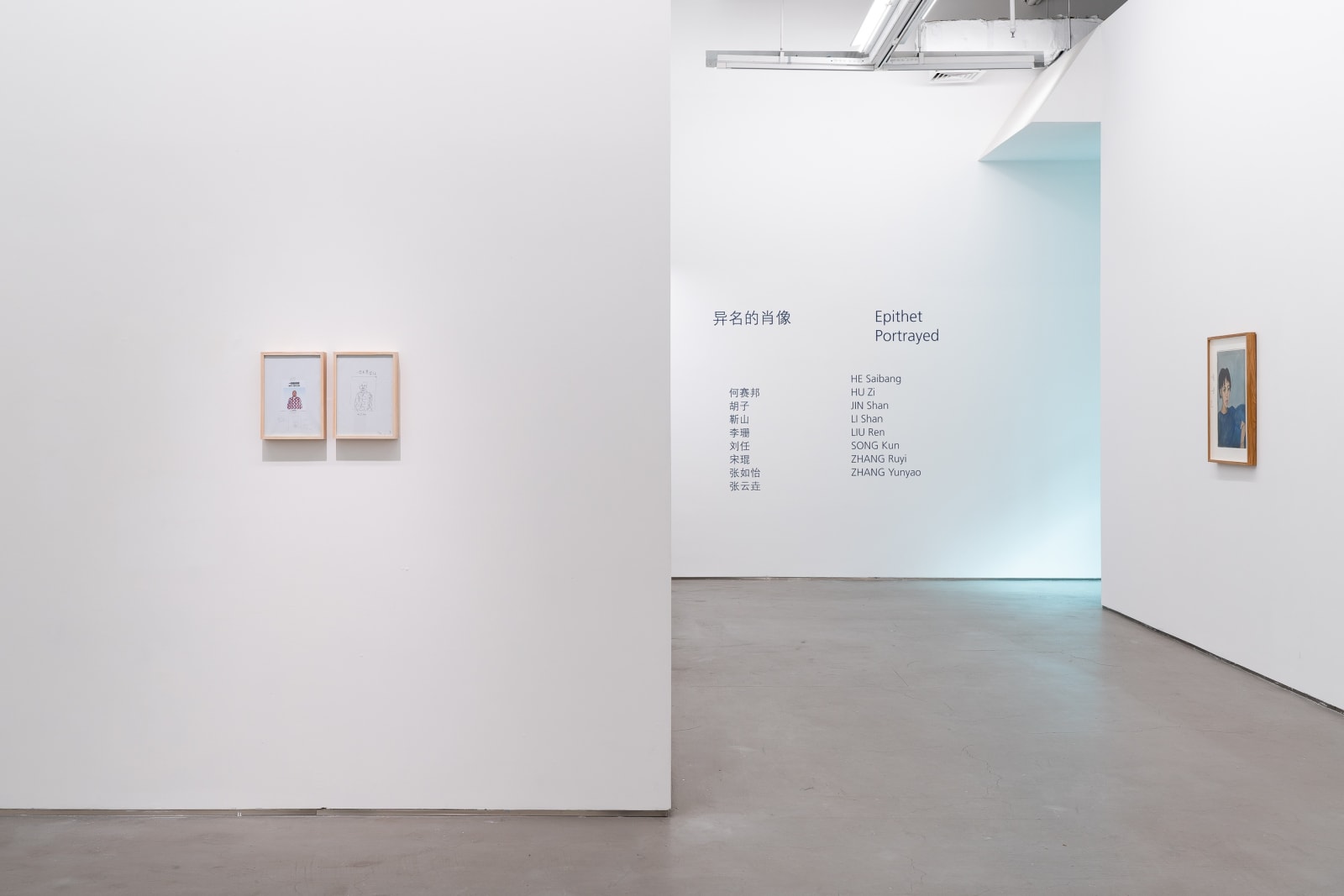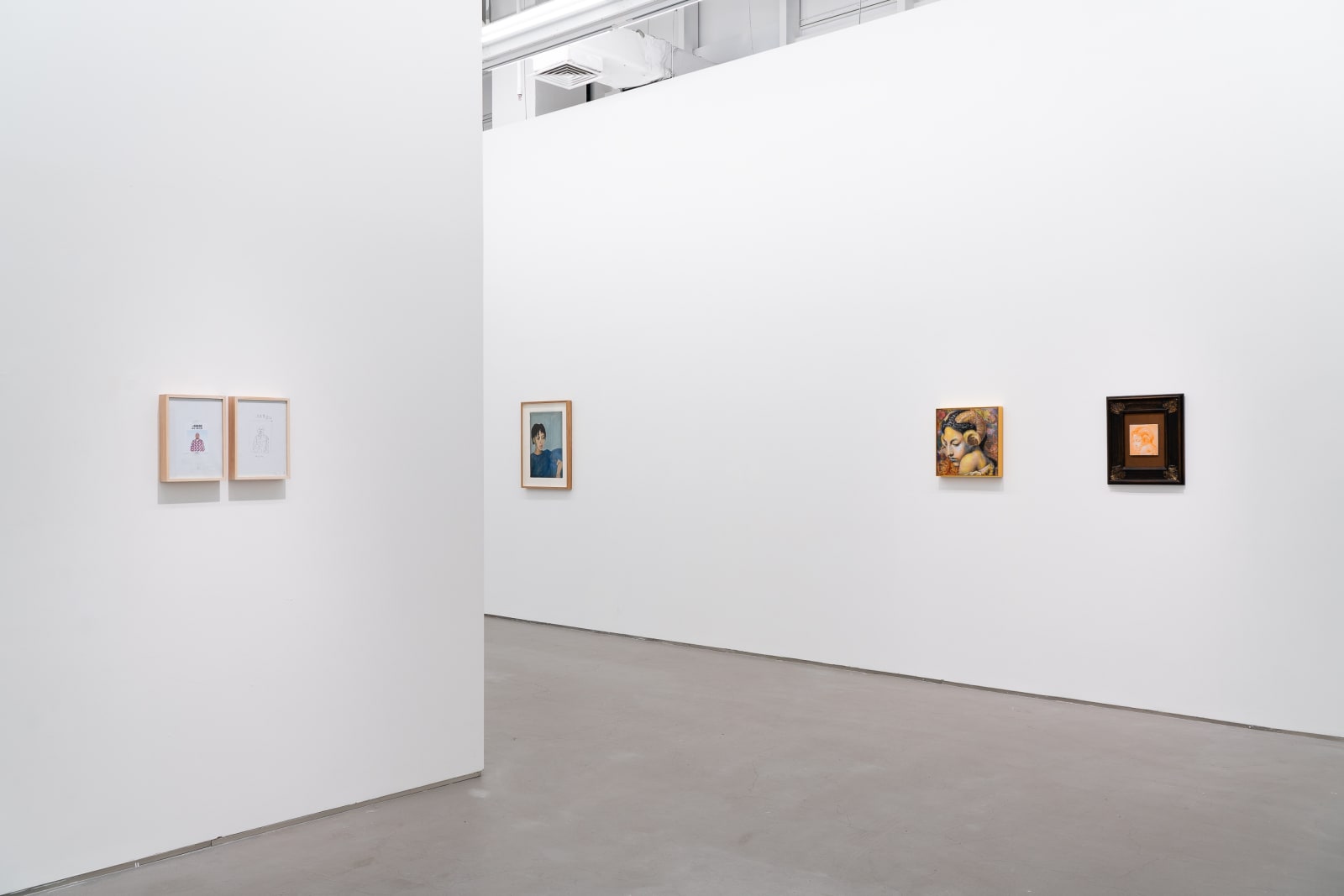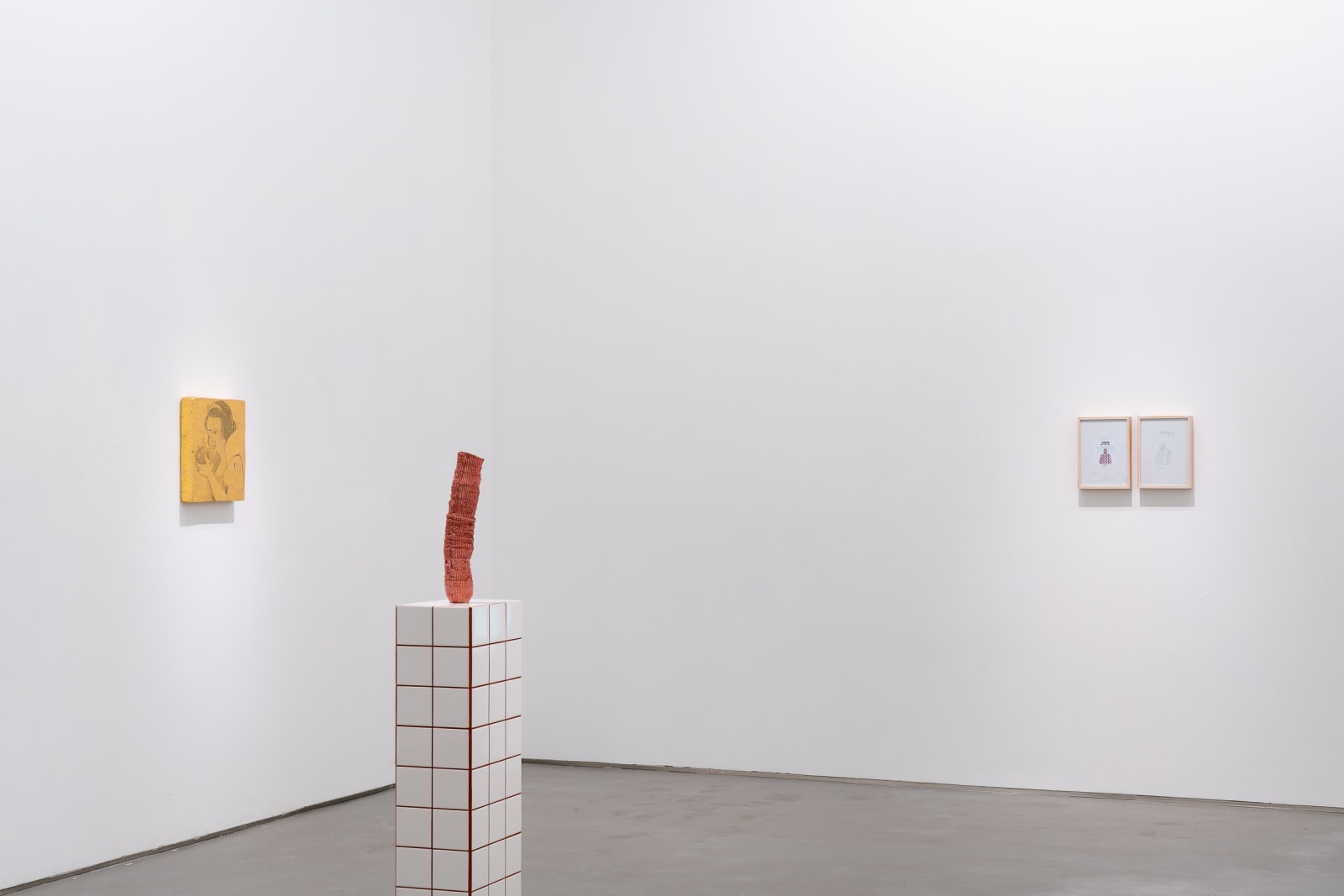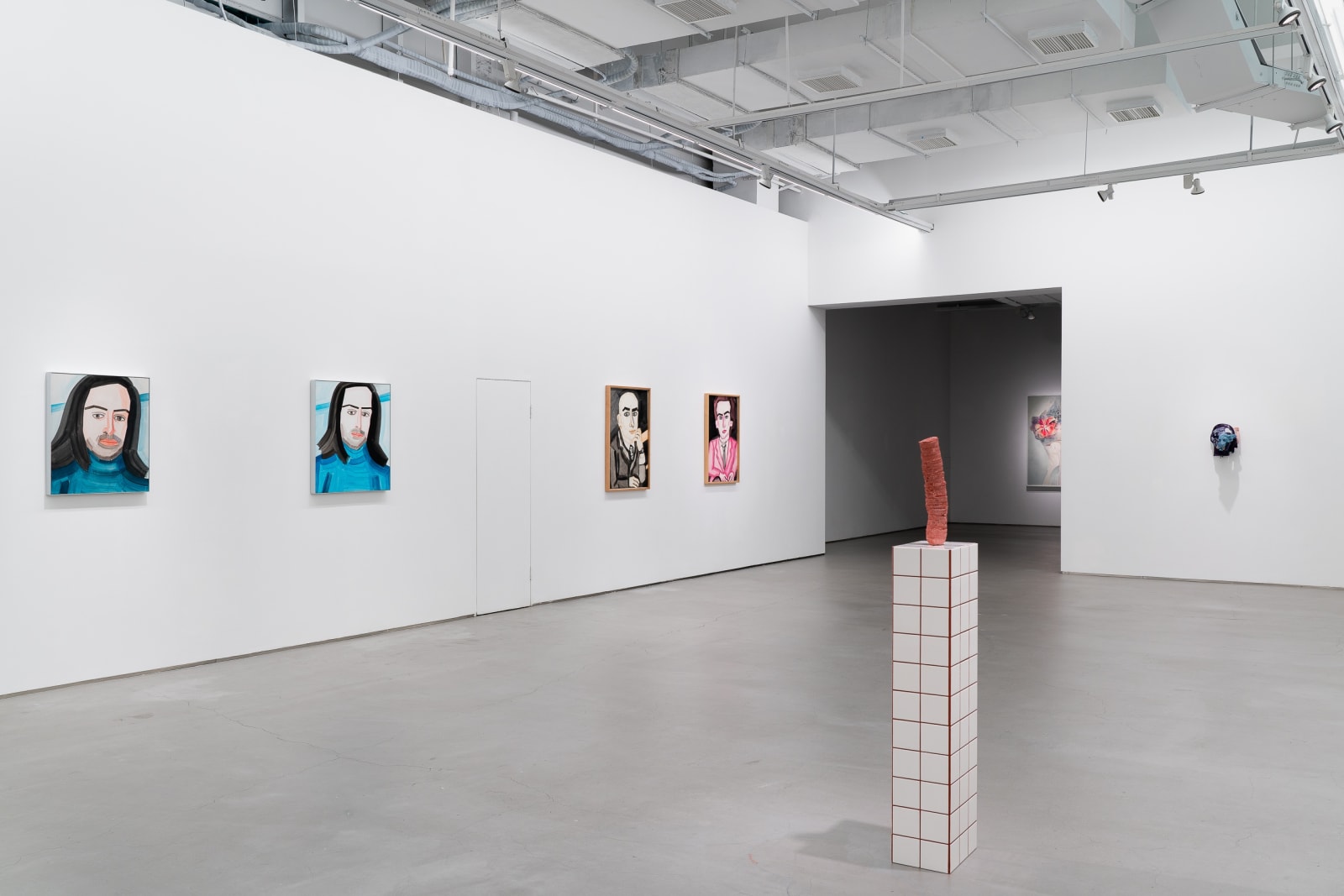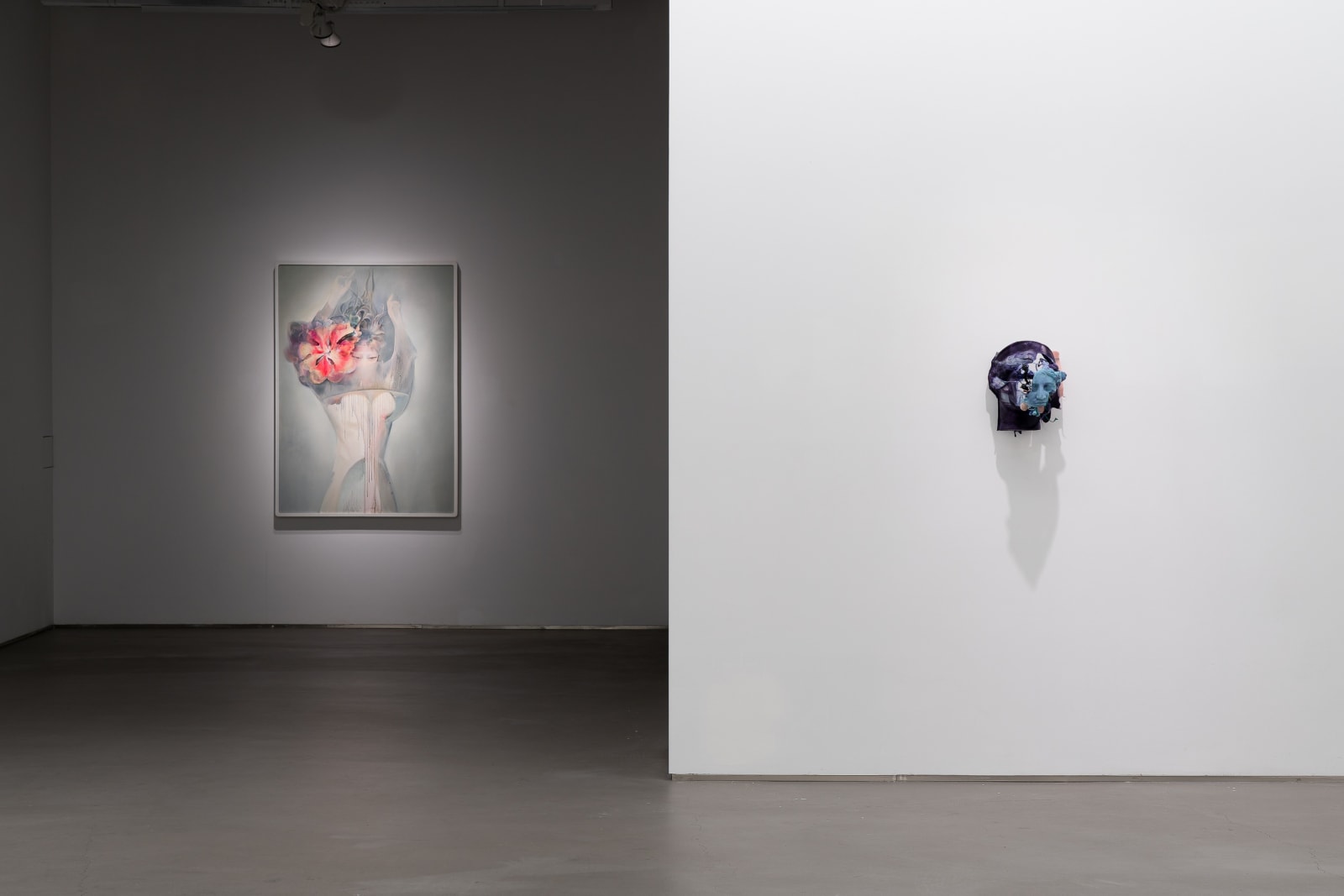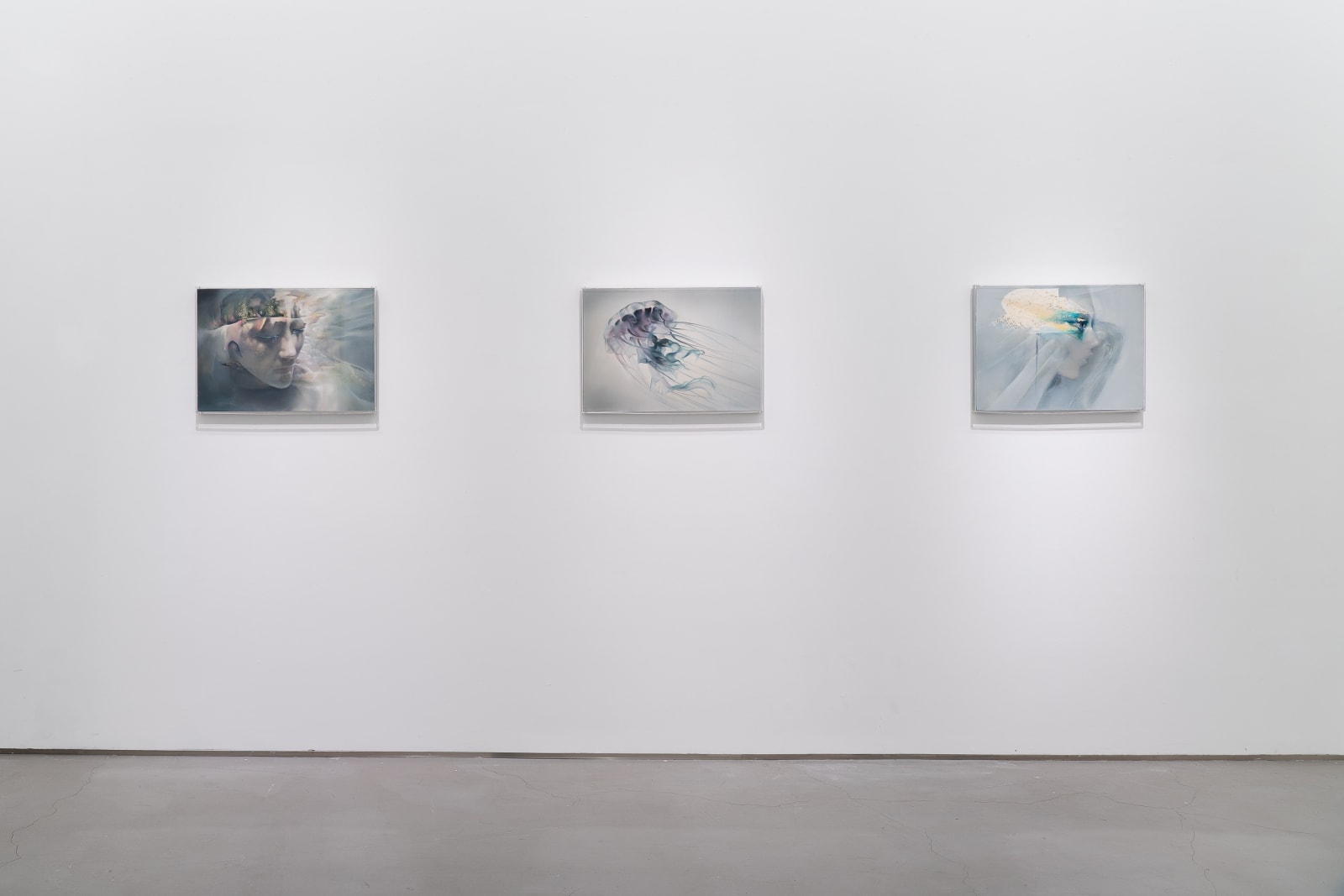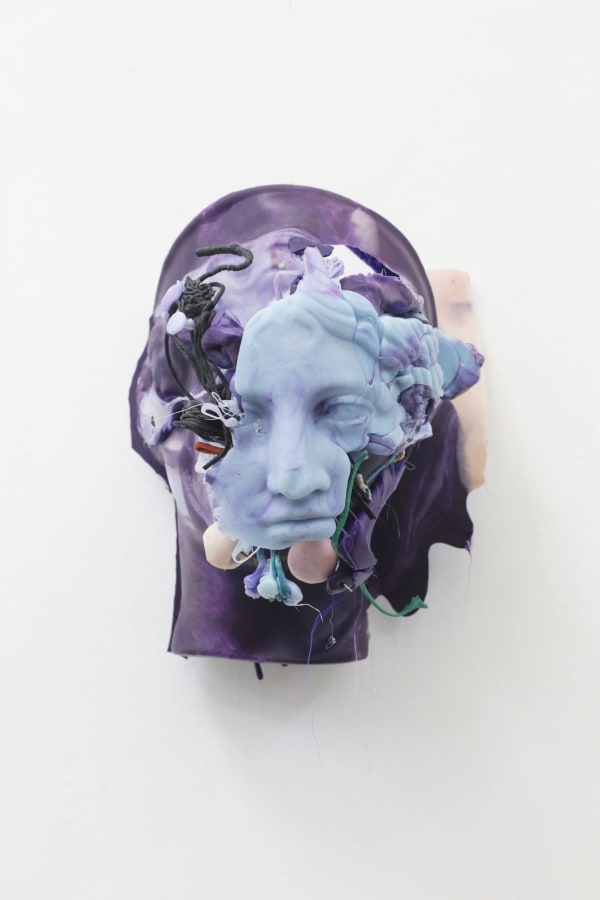Epithet Portrayed: Group Exhibition
Past exhibition
Installation Views
Overview
This September, Don Gallery is welcoming eight artists to the group exhibition -- “Epithet Portrayed.” The show will feature HE Saibang, HU Zi, JIN Shan, LI Shan, LIU Ren, SONG Kun, ZHANG Ruyi, and ZHANG Yunyao.
As a form of rhetorical discourse, portraiture has long broken free of the classical constraints of deism and realism. If viewed through the lens of Pessoa’s use of “heteronyms,” the “portrait” becomes an external manifestation of an epithet written in visual language. The artist projects fragments of the self-epithet onto a form that is not the self; references of the main body and ego are transformed into portrait, which in turn serves as a mask behind which the artist may hide.
Não sou nada. Nunca serei nada. I am nothing, I’ll always be nothing. ——
from “Tabacaria,” by Fernando Pessoa/Álvaro de Campos
Identity constitutes the first layer of the portrait -- an important form of discourse within contemporary culture. SONG Kun delves into the portrait from a humanist perspective, and asks questions about the nature of the self. Gray tones avert the emotionality of color, and emphasize the true nature of painting. Song’s sensitive portrayal of the abstract eases the viewer into roles that the artist has built. Asura -- ravishing yet bellicose, and the jellyfish -- fragile and delicate, are portraits of womanhood.
In ZHANG Ruyi’s pieces, delicate cupcake liners are compressed by colored concrete. The delicate paper liners naturally warp and fold under the pressure, and transform into still life shapes, which are placed on tiled bases. After modification, everyday items collide with their surroundings; tilted cylinders form a portrait of individual consciousness, and the artist begins to observe herself.
HU Zi’s work originates from her friendships, but also maps her own existence. "Francesco Clemente," brings the past and present together, with individuals separated by four decades “appearing” in the same place. While “Giacomo Totti” affixes a moment of linear flow via continuous painting. As it shapes human nature, time leaves its marks on the flesh. Through a portraitization of time, HU Zi constructs her life in the present.
So my village is as big as any other land, because I’m the size of what I see. ——
from “The Keeper of Flocks,” by Alberto Caeiro/Fernando Pessoa
Since Modernism released art from the bonds of imitation, the boundaries of linguistic media have grown porous, while limits of scale are repeatedly challenged. Art represents the artist’s concept, and a transformation of the linguistic framework of art reflects a shift in ideas as well as the birth of a new viewing paradigm.
LIU Ren encodes portraits onto a grid. The tale of Snow White is retold through symbols on a matrix. Like digital fragments or fragments of memory, they bear information, yet are unable to communicate. Snow White and the apple, Eve and the forbidden fruit -- the two archetypes form an intertextuality, wherein the tale of original sin is retold in a storybook setting.
HE Saibang paints a portrait of “creation” in action. The artists uses existing images as a basis for drafts, which then become portraits. The “original” image may be a person, an object, or scenery, but the process of creation transforms the original into its final form as a portrait. Escaping the narrow confines of depicting “personhood,” HE Saibang pushes the boundaries of painting.
O salty sea, so much of whose salt is Portugal’s tears! —— from “Portuguese Sea,” by Fernando Pessoa
Art is inseparable from the specific context of its times. As the first oppositional voice in Chinese contemporary art of the 1970s, members of the “No Name” Group painted portraits of ordinary people, intentionally distancing themselves from the “three prominences” and the “red bright and shining” artistic mores of the day. With the rebellious attitude of the avant-garde, LI Shang’s portraits of her sister Li Lu recenters the figures of the “No Name” Group within the view of art history.
JIN Shan’s “The Stranger” also questions authority. Classical sculptures have been “defaced,” and the abrupt line of their bodies collide with their surroundings. The aesthetic of the Renaissance is torn down in one fell swoop, creating dissonance with a vaunted impression in the viewer’s mind. The blood and gore resting at the base of the portrait represent the wreck of a post-human civilization.
ZHANG Yunyao derives inspiration from and considers the significance of Classical styles in a contemporary context. A common device seen in art history is the blending of man and beast. As our understanding of biology deepens and the development of VR technologies hastens, a new level of realism is possible when it comes to melding human and animal figures, offering a fresh perspective on metamorphoses.
Epithet Portrayed is a masquerade. With the complexities of personal identity in these times, the self is knotted into an emotional cluster which lurks beneath the skin. The portraits bear the various identities, experiences, creative languages, and contexts of our era, and reveal a fragment of each artist’s identity while disguising personality in an epithet.
In Portuguese, “Pessoa” means “person.” The word originates from the Latin “persona,” and implies a “masking.” Though we may ask “what’s in a name?” Pessoa’s name is prescient, as the poet assumed over 70 alter egos throughout his life, and approached “personality” with a unique understanding that informed his art. He created in-depth identities and ideologies for each of his alter egos, obscuring his “self” and dispersing fragments of himself onto them, thereby forming the contradictory figure of the “author.”
As a form of rhetorical discourse, portraiture has long broken free of the classical constraints of deism and realism. If viewed through the lens of Pessoa’s use of “heteronyms,” the “portrait” becomes an external manifestation of an epithet written in visual language. The artist projects fragments of the self-epithet onto a form that is not the self; references of the main body and ego are transformed into portrait, which in turn serves as a mask behind which the artist may hide.
Não sou nada. Nunca serei nada. I am nothing, I’ll always be nothing. ——
from “Tabacaria,” by Fernando Pessoa/Álvaro de Campos
Identity constitutes the first layer of the portrait -- an important form of discourse within contemporary culture. SONG Kun delves into the portrait from a humanist perspective, and asks questions about the nature of the self. Gray tones avert the emotionality of color, and emphasize the true nature of painting. Song’s sensitive portrayal of the abstract eases the viewer into roles that the artist has built. Asura -- ravishing yet bellicose, and the jellyfish -- fragile and delicate, are portraits of womanhood.
In ZHANG Ruyi’s pieces, delicate cupcake liners are compressed by colored concrete. The delicate paper liners naturally warp and fold under the pressure, and transform into still life shapes, which are placed on tiled bases. After modification, everyday items collide with their surroundings; tilted cylinders form a portrait of individual consciousness, and the artist begins to observe herself.
HU Zi’s work originates from her friendships, but also maps her own existence. "Francesco Clemente," brings the past and present together, with individuals separated by four decades “appearing” in the same place. While “Giacomo Totti” affixes a moment of linear flow via continuous painting. As it shapes human nature, time leaves its marks on the flesh. Through a portraitization of time, HU Zi constructs her life in the present.
So my village is as big as any other land, because I’m the size of what I see. ——
from “The Keeper of Flocks,” by Alberto Caeiro/Fernando Pessoa
Since Modernism released art from the bonds of imitation, the boundaries of linguistic media have grown porous, while limits of scale are repeatedly challenged. Art represents the artist’s concept, and a transformation of the linguistic framework of art reflects a shift in ideas as well as the birth of a new viewing paradigm.
LIU Ren encodes portraits onto a grid. The tale of Snow White is retold through symbols on a matrix. Like digital fragments or fragments of memory, they bear information, yet are unable to communicate. Snow White and the apple, Eve and the forbidden fruit -- the two archetypes form an intertextuality, wherein the tale of original sin is retold in a storybook setting.
HE Saibang paints a portrait of “creation” in action. The artists uses existing images as a basis for drafts, which then become portraits. The “original” image may be a person, an object, or scenery, but the process of creation transforms the original into its final form as a portrait. Escaping the narrow confines of depicting “personhood,” HE Saibang pushes the boundaries of painting.
O salty sea, so much of whose salt is Portugal’s tears! —— from “Portuguese Sea,” by Fernando Pessoa
Art is inseparable from the specific context of its times. As the first oppositional voice in Chinese contemporary art of the 1970s, members of the “No Name” Group painted portraits of ordinary people, intentionally distancing themselves from the “three prominences” and the “red bright and shining” artistic mores of the day. With the rebellious attitude of the avant-garde, LI Shang’s portraits of her sister Li Lu recenters the figures of the “No Name” Group within the view of art history.
JIN Shan’s “The Stranger” also questions authority. Classical sculptures have been “defaced,” and the abrupt line of their bodies collide with their surroundings. The aesthetic of the Renaissance is torn down in one fell swoop, creating dissonance with a vaunted impression in the viewer’s mind. The blood and gore resting at the base of the portrait represent the wreck of a post-human civilization.
ZHANG Yunyao derives inspiration from and considers the significance of Classical styles in a contemporary context. A common device seen in art history is the blending of man and beast. As our understanding of biology deepens and the development of VR technologies hastens, a new level of realism is possible when it comes to melding human and animal figures, offering a fresh perspective on metamorphoses.
Epithet Portrayed is a masquerade. With the complexities of personal identity in these times, the self is knotted into an emotional cluster which lurks beneath the skin. The portraits bear the various identities, experiences, creative languages, and contexts of our era, and reveal a fragment of each artist’s identity while disguising personality in an epithet.
In Portuguese, “Pessoa” means “person.” The word originates from the Latin “persona,” and implies a “masking.” Though we may ask “what’s in a name?” Pessoa’s name is prescient, as the poet assumed over 70 alter egos throughout his life, and approached “personality” with a unique understanding that informed his art. He created in-depth identities and ideologies for each of his alter egos, obscuring his “self” and dispersing fragments of himself onto them, thereby forming the contradictory figure of the “author.”
Works
-
 SONG KunDissolve No.1 消溶 No.1, 2018Oil on Canvas 布面油画45 x 65 cm
SONG KunDissolve No.1 消溶 No.1, 2018Oil on Canvas 布面油画45 x 65 cm -
 SONG KunDissolve No.2 消溶 No.2, 2017Oil on Canvas 布面油画45 x 65 cm
SONG KunDissolve No.2 消溶 No.2, 2017Oil on Canvas 布面油画45 x 65 cm -
 SONG KunSukhavati-Hermit Fairy No.1 泛灵净界-灵隐者 No.1, 2019Oil on Canvas, crystal resin collage 布面油画,珠光色,塑形膏,水晶树脂45 x 65 cm
SONG KunSukhavati-Hermit Fairy No.1 泛灵净界-灵隐者 No.1, 2019Oil on Canvas, crystal resin collage 布面油画,珠光色,塑形膏,水晶树脂45 x 65 cm -
 JIN ShanStranger 陌生者, 2019Plastic, Iron wire, PPS 塑料,铁丝,聚苯硫谜38 x 33 x 25 cm
JIN ShanStranger 陌生者, 2019Plastic, Iron wire, PPS 塑料,铁丝,聚苯硫谜38 x 33 x 25 cm -
 ZHANG RuyiBehind that Thing 事物的背面, 2017Colouredconcrete, ceramic tiles 有色混凝土,瓷砖10 (d)x 40 (h)cm (Sculpture), 20 x 30 x 110 cm (Plinth)10 (d)x 40 (h)cm (雕塑), 20 x 30 x 110 cm (底座)
ZHANG RuyiBehind that Thing 事物的背面, 2017Colouredconcrete, ceramic tiles 有色混凝土,瓷砖10 (d)x 40 (h)cm (Sculpture), 20 x 30 x 110 cm (Plinth)10 (d)x 40 (h)cm (雕塑), 20 x 30 x 110 cm (底座) -
 SONG KunBust of Asura 阿修罗半身像, 2015Oil on Canvas, crystal resin 布面油画,水晶树脂160 x 110 cm
SONG KunBust of Asura 阿修罗半身像, 2015Oil on Canvas, crystal resin 布面油画,水晶树脂160 x 110 cm -
 ZHANG YunyaoPortrait for Bacchante 肖像(Bacchante), 2019Graphite and pigment on felt 石墨 色粉 毛毡49 x 41 cm
ZHANG YunyaoPortrait for Bacchante 肖像(Bacchante), 2019Graphite and pigment on felt 石墨 色粉 毛毡49 x 41 cm -
 HE SaibangManuscript 手稿, 2019Pen, pencil on paper and collage 纸上铅笔,拼贴31 x 22.5 cm
HE SaibangManuscript 手稿, 2019Pen, pencil on paper and collage 纸上铅笔,拼贴31 x 22.5 cm -
 ZHANG Yunyao, Portrait for Bacchante 肖像(Bacchante), 2019
ZHANG Yunyao, Portrait for Bacchante 肖像(Bacchante), 2019 -
 HU ZiFrancesco Clemente 1973, 2019Gouache on paper 纸上水粉95 x 64 cm
HU ZiFrancesco Clemente 1973, 2019Gouache on paper 纸上水粉95 x 64 cm -
 LIU RenSnow White & Forbidden Fruit 白雪公主与禁果, 2019Straw paper, ink printing, gold foil, mixed media 草纸,丝网,金箔,综合材料38.6 x 34.5 cm
LIU RenSnow White & Forbidden Fruit 白雪公主与禁果, 2019Straw paper, ink printing, gold foil, mixed media 草纸,丝网,金箔,综合材料38.6 x 34.5 cm -
 LI ShanLi Lu 李璐, 1978Oil on paper 纸上油画54.4 x 39.2 cm
LI ShanLi Lu 李璐, 1978Oil on paper 纸上油画54.4 x 39.2 cm -
 HU ZiGiacomo Totti, 2019Oil on board 木板油画80 x 70 cm
HU ZiGiacomo Totti, 2019Oil on board 木板油画80 x 70 cm -
 HU ZiGiacomo Totti, 2019Oil on board 木板油画70 x 60 cm
HU ZiGiacomo Totti, 2019Oil on board 木板油画70 x 60 cm

